Five Eyes
The Five Eyes (FVEY) is an intelligence alliance comprising Australia, Canada, New Zealand, the United Kingdom and the United States.[1] These countries are parties to the multilateral UKUSA Agreement, a treaty for joint cooperation in signals intelligence.[2][3][4]
Five Eyes | |
|---|---|
 | |
| Largest city | London |
| Official languages | English (de facto) |
| Type | Intelligence alliance |
| Contributors | |
| Establishment | |
| 14 August 1941 | |
| 17 May 1943 | |
| Area | |
• Total area | 28,023,173 km2 (10,819,808 sq mi) (1st) |
• Water (%) | 5.86 |
| Population | |
• 2020 estimate | 464,746,412 (3rd) |
• Density | 16/km2 (41.4/sq mi) |
| GDP (PPP) | 2020 estimate |
• Total | $26,536 trillion (2nd) |
• Per capita | $57,097 (13th) |
| GDP (nominal) | 2020 estimate |
• Total | $27,494 trillion (1st) |
• Per capita | $59,159 (10th) |
| Gini (2017) | 35.6 medium |
| HDI (2019) | 0.924 very high |
| Currency | Australian dollar Canadian dollar New Zealand dollar Pound sterling United States dollar |
| Internet TLD | .au, .ca, .nz, .uk, .us |
The origins of the FVEY can be traced back to the post–World War II period, when the Atlantic Charter was issued by the Allies to lay out their goals for a post-war world. During the course of the Cold War, the ECHELON surveillance system was initially developed by the FVEY to monitor the communications of the former Soviet Union and the Eastern Bloc, although it is now used to monitor private communications worldwide.[5][6]
In the late 1990s, the existence of ECHELON was disclosed to the public, triggering a major debate in the European Parliament and, to a lesser extent, the United States Congress. The FVEY further expanded their surveillance capabilities during the course of the "war on terror", with much emphasis placed on monitoring the World Wide Web. The former NSA contractor Edward Snowden described the Five Eyes as a "supra-national intelligence organisation that does not answer to the known laws of its own countries".[7] Documents leaked by Snowden in 2013 revealed that the FVEY has been spying on one another's citizens and sharing the collected information with each other in order to circumvent restrictive domestic regulations on surveillance of citizens.[8][9][10][11]
In spite of continued controversy over its methods, the Five Eyes relationship remains one of the most comprehensive known espionage alliances in history.[12]
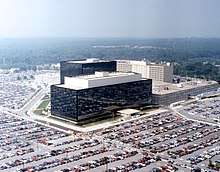
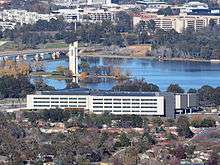
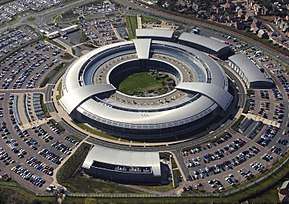
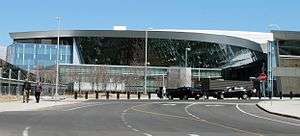
Since processed intelligence is gathered from multiple sources, the intelligence shared is not restricted to signals intelligence (SIGINT) and often involves defence intelligence as well as human intelligence (HUMINT) and geospatial intelligence (GEOINT).
Organisations
The following table provides an overview of most of the FVEY agencies involved in such forms of data sharing.[2]
History
Origins (1940s–1950s)

The origins of the Five Eyes alliance can be traced back to the Atlantic Charter, which was issued in August 1941 to lay out the Allied goals for the post-war world. On 17 May 1943, the British–U.S. Communication Intelligence Agreement, also known as the BRUSA Agreement, was signed by the UK and U.S. governments to facilitate co-operation between the U.S. War Department and the British Government Code and Cypher School (GC&CS). On 5 March 1946, the secret treaty was formalized as the UKUSA Agreement, which forms the basis for all signal intelligence cooperation between the NSA and GCHQ to this day.[13][14]
In 1948, the treaty was extended to include Canada, followed by Norway (1952), Denmark (1954), West Germany (1955), Australia (1956), and New Zealand (1956).[14] These countries participated in the alliance as "third parties". By 1955, the formal status of the remaining Five Eyes countries was officially acknowledged in a newer version of the UKUSA Agreement that contained the following statement:
At this time only Canada, Australia and New Zealand will be regarded as UKUSA-collaborating Commonwealth countries.[14]
The "Five Eyes" term has its origins as a shorthand for a "AUS/CAN/NZ/UK/US EYES ONLY" (AUSCANNZUKUS) releasability caveat.[15]
Cold War (1950s–1990s)
During the Cold War, GCHQ and the NSA shared intelligence on the Soviet Union, the People's Republic of China, and several eastern European countries (known as Exotics).[16] Over the course of several decades, the ECHELON surveillance network was developed to monitor the military and diplomatic communications of the Soviet Union and its Eastern Bloc allies.[17]
During the Vietnam War, Australian and New Zealand operators in the Asia-Pacific region worked directly to support the United States, while GCHQ operators stationed in the (then) British colony of Hong Kong were tasked with monitoring North Vietnamese air defence networks.[18][19] During the Falklands War, the British received intelligence data from its FVEY allies such as Australia, as well as from third parties such as Norway and France.[20][21][22] In the aftermath of the Gulf War, a technician of the ASIS was used by SIS to bug Kuwaiti government offices.[21]
In the 1950s, SIS and the CIA jointly orchestrated the overthrow of Iran's Prime Minister Mohammad Mosaddegh.[23][24][25][26] In the 1960s, SIS and the CIA jointly orchestrated the assassination of the Congolese independence leader Patrice Lumumba.[27][28][29] In the 1970s, the ASIS and the CIA jointly orchestrated the overthrow of Chile's President Salvador Allende.[30][31][32][33] During the Tiananmen Square protests of 1989, SIS and the CIA took part in Operation Yellowbird to rescue dissidents from the Chinese regime.[34]
ECHELON network disclosures (1972–2000)
By the end of the 20th century, the ECHELON surveillance network had evolved into a global system capable of sweeping up massive amounts of private and commercial communications, including telephone calls, fax, e-mail and other data traffic. This was done through the interception of communication bearers such as satellite transmission and public switched telephone networks.[35]
The Five Eyes has two types of information collection methods: the PRISM program and the Upstream collection system. The PRISM program gathers user information from technology firms such as Google, Apple and Microsoft, while the Upstream system gathers information directly from the communications of civilians via fiber cables and infrastructure as data flows past. The program's first disclosure to the public came in 1972 when a former NSA communications analyst reported to Ramparts Magazine that the NSA had developed technology that "could crack all Soviet codes". [36] In 1988, Duncan Campbell revealed in the New Statesman the existence of ECHELON, an extension of the UKUSA Agreement on global signals intelligence [Sigint]. The story, 'Somebody's listening,' detailed how the eavesdropping operations were not only being employed in the interests of 'national security,' but were regularly abused for corporate espionage in the service of US business interests. The piece passed largely unnoticed outside of journalism circles.[37] In 1996, a detailed description of ECHELON was provided by New Zealand journalist Nicky Hager in a book titled "Secret Power – New Zealand's Role in the International Spy Network", which was cited by the European Parliament in a 1998 report titled "An Appraisal of the Technology of Political Control" (PE 168.184).[38] On 16 March 2000, the Parliament called for a resolution on the Five Eyes and their ECHELON surveillance network, which, if passed, would have called for the "complete dismantling of ECHELON".[39]
Three months later, the Temporary Committee on ECHELON was set up by the European Parliament to investigate the ECHELON surveillance network. However, according to a number of European politicians such as Esko Seppänen of Finland, these investigations were hindered by the European Commission.[40]
In the United States, congressional legislators warned that the ECHELON system could be used to monitor U.S. citizens.[41] On 14 May 2001, the U.S. government cancelled all meetings with the Temporary Committee on ECHELON.[42]
According to a BBC report in May 2001, "the US Government still refuses to admit that Echelon even exists."[17]
War on Terror (2001–present)
In the aftermath of the September 11 attacks on the World Trade Center and the Pentagon, the surveillance capabilities of the Five Eyes were greatly increased as part of the global War on Terror.
During the run-up to the Iraq War, the communications of UN weapons inspector Hans Blix were monitored by the Five Eyes.[43][44] The office of UN Secretary-General Kofi Annan was bugged by British agents.[45][46] An NSA memo detailed plans of the Five Eyes to boost eavesdropping on UN delegations of six countries as part of a "dirty tricks" campaign to apply pressure on these six countries to vote in favour of using force against Iraq.[45][47][48]
SIS and the CIA forged a surveillance partnership with Libya's ruler Muammar Gaddafi to spy on Libyan dissidents in the West, in exchange for permission to use Libya as a base for extraordinary renditions.[49][50][51][52][53]
As of 2010, the Five Eyes also have access to SIPRNet, the U.S. government's classified version of the Internet.[54]
In 2013, documents leaked by the former NSA contractor Edward Snowden revealed the existence of numerous surveillance programs jointly operated by the Five Eyes. The following list includes several notable examples reported in the media:
- PRISM – Operated by the NSA together with GCHQ and the ASD[55][56]
- XKeyscore – Operated by the NSA with contributions from the ASD and the GCSB[57]
- Tempora – Operated by GCHQ with contributions from the NSA[58][59]
- MUSCULAR – Operated by GCHQ and the NSA[60]
- STATEROOM – Operated by the ASD, CIA, CSE, GCHQ, and NSA[61]
In March 2014, the International Court of Justice (ICJ) ordered Australia to stop spying on East Timor. This marks the first time that such restrictions are imposed on a member of the FVEY.[62]
Domestic espionage sharing controversy
In recent years, documents of the FVEY have shown that they are intentionally spying on one another's citizens and sharing the collected information with each other.[8][9][10][11][63] Shami Chakrabarti, the director of the advocacy group Liberty, claimed that the FVEY alliance increases the ability of member states to "subcontract their dirty work" to each other.[64] The former NSA contractor Edward Snowden described the FVEY as a "supra-national intelligence organisation that doesn't answer to the laws of its own countries".[7]
As a result of Snowden's disclosures, the FVEY alliance has become the subject of a growing amount of controversy in parts of the world:
.svg.png)


Other international cooperatives
Since the addition of two members in 1956, the specific Five Eyes consist of Australia (accepted 1956), Canada (accepted 1948), New Zealand (accepted 1956), the United Kingdom (co-creator 1946), and the United States (co-creator 1946).[71][72] Further, there is a group of nations termed '3rd Party Partners', which share their intelligence with the 5 Eyes.
While the Five Eyes is a very specific agreement with specific operations amongst the five nations, other non-FVEY sharing agreements have been set up independently and for specific purposes. For example, according to Edward Snowden, the NSA has a "massive body" called the Foreign Affairs Directorate that is responsible for partnering with foreign countries.[73]
Six Eyes
According to the news magazine L'Obs, in 2009, the United States proposed to France to join the Five Eyes, that would then have become the "Six Eyes". Nicolas Sarkozy however made the requirement to be granted the same status as other allies, including the signing of a "no-spy agreement". This requirement was approved by the director of the NSA, but not by the director of the CIA, and furthermore not by President Barack Obama, resulting in a refusal from France.[74]
In 2013 it was reported that Germany was interested in joining the Five Eyes alliance.[75][76] At that time, several members of the United States Congress, including Tim Ryan and Charles Dent, were pushing for Germany's entrance to the Five Eyes alliance.[77]
Israel,[78] Singapore, South Korea,[79] and Japan are collaborating with Five Eyes.[80]
Five Eyes Plus Three Against China and Russia
Five Eyes and, reportedly, a group of other "like-minded partners", such as France, Germany and Japan, since early 2018 introduced an information-sharing framework to counter threats arising from foreign activities of China as well as Russia.[81][82]
Five Eyes Plus Three Against North Korea
Five Eyes and France, Japan and South Korea tied up intelligence information sharing about North Korea's military activities including ballistic missile.[83]
Nine Eyes

The Nine Eyes is a different arrangement that consists of the same members of Five Eyes working with Denmark, France, the Netherlands and Norway.[71][72]
Fourteen Eyes
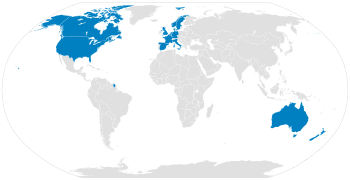
According to a document leaked by Edward Snowden, there is another working agreement amongst 14 nations officially known as SIGINT Seniors Europe, or "SSEUR".[84] These "14 Eyes" consist of the same members of Nine Eyes plus Belgium, Germany, Italy, Spain and Sweden.[71][72]
Further intelligence sharing collaborations
As spelled out by Privacy International, there are a number of issue-specific intelligence agreements that include some or all the above nations and numerous others, such as:[85][86]
- An area specific sharing amongst the 41 nations that formed the allied coalition in Afghanistan;
- A shared effort of the Five Eyes nations in "focused cooperation" on computer network exploitation with Austria, Belgium, Czech Republic, Denmark, Germany, Greece, Hungary, Iceland, Italy, Japan, Luxembourg, the Netherlands, Norway, Poland, Portugal, South Korea, Spain, Sweden, Switzerland and Turkey;
- Club of Berne: 17 members including primarily European States; the US is not a member;
- Maximator: an intelligence alliance between Denmark, Germany, France, the Netherlands and Sweden
- The Counterterrorist Group: a wider membership than the 17 European states that make up the Club of Berne, and includes the US;
- NATO Special Committee: made up of the heads of the security services of NATO's 28 member countries
List of FVEY surveillance targets
Notable individuals
As the surveillance capabilities of the FVEY continue to increase to keep up to pace with technological advancements, a global surveillance system has been gradually developed to capture the communications of entire populations across national borders.[87] The following list contains a handful of targets of the FVEY who are public figures in various fields. In order for a person to be included in the list, there must be well-documented evidence based on reliable sources, such as leaked or declassified documents or whistleblower accounts, which demonstrate that the person involved is, or was, intentionally targeted for FVEY surveillance.
| Picture | Name | Lifetime | Surveillance agencies | Notes | Ref. |
|---|---|---|---|---|---|
 |
Charlie Chaplin | 1889–1977 |
|
A British comedian, filmmaker, and composer who rose to fame in the silent era, Charlie Chaplin became one of the most important figures in the film industry through his screen persona "the Tramp". Due to his alleged ties to communism, he was placed under surveillance in the early 1950s by MI5 agents, who acted on behalf of the FBI as part of a campaign to banish him from the United States. | [88][89][90] |
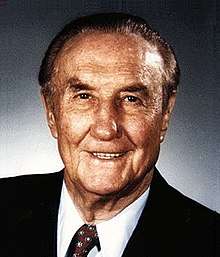 |
Strom Thurmond | 1902–2003 |
|
A Dixiecrat candidate in the 1948 U.S. presidential election, Strom Thurmond represented South Carolina in the United States Senate from 1954 until 2003, when he became 100 years old and was recognized at that time as the longest-serving senator in U.S. history. In 1988, Margaret Newsham, a Lockheed employee, told a closed-door session of the United States Congress that Thurmond's telephone calls were being intercepted by the FVEY via their ECHELON surveillance system. | [91][92][93] |
.jpg) |
Nelson Mandela | 1918–2013 |
|
A South African activist, lawyer, and philanthropist who served as President of South Africa from 1994 to 1999, Nelson Mandela was denounced as a terrorist by critics and was placed under surveillance by British SIS agents. In 1962, Mandela was arrested after details of his activities were picked up by the CIA and handed over to local authorities. | [94][95][96][97] |
 |
Jane Fonda | 1937– |
|
An American actress, writer, political activist and former fashion model. Due to her political activism, her communications as well as those of her husband, Tom Hayden, were intercepted by GCHQ and handed over to the NSA. | [98][99] |
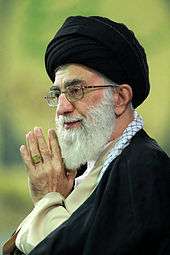 |
Ali Khamenei | 1939– |
|
A Shia cleric and a former President of Iran, Ali Khamenei is the current Supreme Leader of Iran. During a rare visit to Iranian Kurdistan in 2009, he and his entourage were targeted for surveillance under a high-tech espionage mission involving the analysis and processing of satellite imagery. The operation was jointly conducted by GCHQ and the NSA. | [100] |
 |
John Lennon | 1940–1980 |
|
A British musician, songwriter, and a lead singer of The Beatles, John Lennon engaged in anti-war activism through several iconic songs such as "Give Peace a Chance" and "Happy Xmas (War Is Over)". In 1971, he moved to New York City to join activists in the United States to protest against the Vietnam War. Over the next 12 months, the U.S. government launched an extensive surveillance operation to monitor his activities and to deport him back to Britain. The operation was conducted by the FBI with the help of MI5. | [101][102][103][104] |
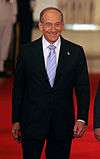 |
Ehud Olmert | 1949– |
|
An Israeli politician, lawyer, and a former Mayor of Jerusalem, Ehud Olmert was the 12th Prime Minister of Israel. He and the Israeli Minister of Defense, Ehud Barak, were included in a list of surveillance targets used by GCHQ and the NSA. | [105] |
 |
Susilo Bambang Yudhoyono | 1949– |
|
A former chief military observer of the United Nation Peacekeeping Force in Bosnia and the former President of Indonesia, Susilo Bambang Yudhoyono and his wife were placed under surveillance by the ASD, which shared details of the operation with the NSA. | [106][107][108] |
_cropped.jpg) |
Angela Merkel | 1954– |
|
A German politician, former research scientist, and the Chancellor of Germany since 2005, Angela Merkel's phone communications were monitored by the Special Collection Service, which is part of the STATEROOM surveillance program of the FVEY. | [109][110][111] |
 |
Diana, Princess of Wales | 1961–1997 |
|
A firm opponent of the international usage of land mines, the Princess of Wales was placed under surveillance by GCHQ and the NSA, which kept a top secret file on her containing more than 1,000 pages. The contents of Diana's NSA file have not been disclosed because of national security concerns. | [112][113][114] |
 |
Kim Dotcom | 1974– |
|
A German-Finnish Internet entrepreneur, businessman, and hacktivist, Kim Dotcom (born Kim Schmitz) is the founder of the file hosting service Megaupload. On behalf of the FBI, the GCSB of New Zealand conducted illegal surveillance on Dotcom. Prime Minister John Key later issued an apology for the GCSB's illegal surveillance. | [115][116][117][118] |
Notable organisations
- Airlines
- Broadcasting networks
- Al Jazeera[120] (Qatar)
- Financial institutions
- MasterCard[121] (USA)
- Society for Worldwide Interbank Financial Telecommunication[121]
- Visa Inc.[121] (USA)
- Multinational corporations
- Thales Group[122] (France)
- Oil corporations
- Petrobras[123] (Brazil)
- Total S.A.[122] (France)
- Search engines
- Telecom operators
- United Nations
- United Nations General Assembly[130]
- United Nations Institute for Disarmament Research[131]
- United Nations Children's Fund[122]
- United Nations Development Programme[122]
- International Atomic Energy Agency[132]
- Universities
- Tsinghua University[133] (China)
- The Racah Institute of Physics at the Hebrew University of Jerusalem[131] (Israel)
Other areas of cooperation
Hong Kong
The foreign ministers of the Five Eyes countries issued a joint statement on 9 August 2020 on the erosion of fundamental rights in Hong Kong. No reference to the name "Five Eyes" was made in the statement.[134] There were previously statements on the situation of Hong Kong issued jointly by the foreign ministers of Canada and the United Kingdom, by the foreign ministers of Australia, Canada and the United Kingdom, and by that of Australia, Canada, the United Kingdom and the United States (and one occasion by those of G7 member countries, which did not include Australia and New Zealand, and the European Union). The 9 August 2020 statement was the first which all Five Eyes foreign ministers were involved in a statement on any topic.[135]
In June 2020, British Foreign Secretary Dominic Raab lobbied Five Eyes allies on burden-sharing for the handling of potential Hong Kong exodus.[136][137][138] In a joint press conference with his American counterpart Mike Pompeo in July 2020 in London, Raab stated he would coordinate with Five Eyes allies on Hong Kong issues, including arms embargo, burden sharing for the exodus, and suspension of extradition treaties.[139]
See also
- Anglosphere
- ABCANZ Armies
- Air and Space Interoperability Council (air forces)
- AUSCANNZUKUS (navies)
- Border Five
- Five Country Conference (immigration)
- Five Nations Passport Group
- The Technical Cooperation Program (technology and science)
- UKUSA Agreement (signals intelligence)
References
- "Five Eyes Intelligence Oversight and Review Council (FIORC)". www.dni.gov.
- Cox, James (December 2012). "Canada and the Five Eyes Intelligence Community" (PDF). Canadian Defence and Foreign Affairs Institute. Archived from the original (PDF) on 2015-09-10. Retrieved 2016-07-24.
- "Five Eyes". United States Army Combined Arms Center. Archived from the original on 2 February 2014. Retrieved 18 January 2014.
- "PKI Interoperability with FVEY Partner Nations on the NIPRNet". United States Department of the Navy. Archived from the original on 1 February 2014. Retrieved 18 January 2014.
- Asser, Martin (6 July 2000). "Echelon: Big brother without a cause?". BBC. Archived from the original on 25 January 2014. Retrieved 28 January 2014.
- "Q&A: What you need to know about Echelon". BBC News. 29 May 2001. Archived from the original on 18 December 2013. Retrieved 28 January 2014.
- "Snowden-Interview: Transcript". Norddeutscher Rundfunk. 26 January 2014. Archived from the original on 28 January 2014. Retrieved 28 January 2014.
- Ball, James (20 November 2013). "US and UK struck secret deal to allow NSA to 'unmask' Britons' personal data". The Guardian. Archived from the original on 20 January 2014. Retrieved 18 January 2014.
- MacAskill, Ewen (2 December 2013). "Revealed: Australian spy agency offered to share data about ordinary citizens". The Guardian. Archived from the original on 18 January 2014. Retrieved 18 January 2014.
- Watt, Nicholas (10 June 2013). "NSA 'offers intelligence to British counterparts to skirt UK law'". The Guardian. Archived from the original on 29 December 2013. Retrieved 19 January 2014.
- British spy agency taps cables, shares with U.S. NSA – Guardian Archived 2014-01-25 at the Wayback Machine, Reuters, 21 June 2013. Retrieved 18 January 2014.
- Perry, Nick (16 July 2013). "Experts say US spy alliance will survive Snowden". Associated Press. Archived from the original on 27 June 2015. Retrieved 25 June 2015.
- Farrell, Paul (2 December 2013). "History of 5-Eyes – explainer". The Guardian. Archived from the original on 25 May 2017. Retrieved 27 January 2014.
- Norton-Taylor, Richard (25 June 2010). "Not so secret: deal at the heart of UK-US intelligence". The Guardian. Archived from the original on 5 December 2013. Retrieved 27 January 2014.
- Cox, James (December 2012). "Canada and the Five Eyes Intelligence Community" (PDF). Canadian Defence and Foreign Affairs Institute. Archived from the original (PDF) on 2013-12-04.
- Aldrich, Richard (24 June 2010). "Allied code-breakers co-operate – but not always". The Guardian. Archived from the original on 15 September 2013. Retrieved 25 June 2010.
- "Q&A: What you need to know about Echelon". BBC. 29 May 2001. Archived from the original on 18 December 2013. Retrieved 27 January 2014.
- Norton-Taylor, Richard (19 June 2010). "GCHQ by Richard Aldrich, Securing the State by David Omand". The Guardian. Archived from the original on 3 February 2014. Retrieved 30 January 2014.
The US was especially keen on GCHQ's station in Hong Kong, particularly during the Vietnam war
- Campbell, Duncan (25 July 2000). "Inside Echelon". Heise Online. Archived from the original on 26 January 2014. Retrieved 19 December 2013.
- Jones, George (13 Mar 2002). "How France helped us win Falklands war". The Daily Telegraph. Archived from the original on 7 April 2018. Retrieved 5 April 2018.
- Milliken, Robert (23 February 1994). "Canberra spy link to MI6 alleged". The Independent. Archived from the original on 8 January 2018. Retrieved 27 August 2017.
- "Norsk lyttestasjon viktig brikke i Falklandskrigen" (in Norwegian). Norwegian Broadcasting Corporation. 21 May 2002. Archived from the original on 29 June 2009.
- Sanchez, Raf (19 August 2013). "British diplomats tried to suppress details of SIS role in Iran coup". The Daily Telegraph. Archived from the original on 28 August 2013. Retrieved 27 January 2014.
- Risen, James (16 April 2000). "Secrets Of History: The C.I.A. in Iran—A special report. How a Plot Convulsed Iran in '53 (and in '79)". The New York Times. Archived from the original on 25 September 2013. Retrieved 22 August 2013.
- "Declassified Documents Reveal CIA Role In 1953 Iranian Coup". NPR. 1 September 2013. Archived from the original on 25 January 2014. Retrieved 27 January 2014.
- Merica, Dan (20 August 2013). "In declassified document, CIA acknowledges role in '53 Iran coup". CNN. Archived from the original on 17 January 2014. Retrieved 27 January 2014.
- Corera, Gordon (2 April 2013). "MI6 and the death of Patrice Lumumba". BBC. Archived from the original on 2 November 2013. Retrieved 2 February 2014.
- DeYoung, Karen; Walter Pincus (27 June 2007). "CIA Releases Files On Past Misdeeds". The Washington Post. Archived from the original on 21 January 2014. Retrieved 2 February 2014.
A one-paragraph memo recounts planning for a "project involving the assassination of Patrice Lumumba, then premier of the Republic of Congo.
- "CIA details Cold War skulduggery". BBC. 26 June 2007. Archived from the original on 19 February 2014. Retrieved 2 February 2014.
- McDonald, Hamish (12 December 2006). "Canberra's furtive aid in overthrowing Allende". The Sydney Morning Herald. Archived from the original on 9 June 2014. Retrieved 30 January 2014.
- Suich, Max (20 March 2010). "Spymaster stirs spectre of covert foreign activities". The Australian. Archived from the original on 2 April 2011. Retrieved 30 January 2014.
- Herbert, David. "Questions over Australian involvement in Chile coup". Special Broadcasting Service. Archived from the original on 4 February 2014. Retrieved 30 January 2014.
- "The Other 9/11". Special Broadcasting Service. Archived from the original on 4 February 2014. Retrieved 30 January 2014.
- Anderlini, Jamil (1 June 2014). "Tiananmen Square: the long shadow". Financial Times. Archived from the original on 6 June 2014. Retrieved 2 June 2014.
The extraction missions, aided by MI6, the UK’s Secret Intelligence Service, and the CIA, according to many accounts, had scrambler devices, infrared signallers, night-vision goggles and weapons.
- Schmid, Gerhard (11 July 2001). "On the existence of a global system for the interception of private and commercial communications (ECHELON interception system), (2001/2098(INI))" (pdf – 194 pages). European Parliament: Temporary Committee on the ECHELON Interception System. Archived from the original on 26 December 2013. Retrieved 5 January 2013.
- "Ex‐Code Analyst Explains His Aim". The New York Times. 1972-07-19. ISSN 0362-4331. Archived from the original on 2019-12-08. Retrieved 2019-12-08.
- Campbell, Duncan. "duncancampbell.org". Duncan Campbell.org. Archived from the original on 28 September 2015. Retrieved 27 September 2015.
- "An Appraisal of the Technology of Political Control". European Parliament. Archived from the original on 17 April 1999. Retrieved 27 January 2014.
- "European Parliament resolution on Echelon". European Parliament. 16 March 2000. Archived from the original on 24 September 2015. Retrieved 27 January 2014.
- "Echelon and the European Parliament". European Parliament. Archived from the original on 9 December 2013. Retrieved 27 January 2014.
- McKay, Niall (27 May 1999). "Lawmakers Raise Questions About International Spy Network". The New York Times. Archived from the original on 30 January 2013. Retrieved 27 January 2014.
- Campbell, Duncan (1 June 2001). "Echelon Chronology". Heise Online. Archived from the original on 21 December 2013. Retrieved 19 December 2013.
- Kim Sengupta; Kathy Marks (Feb 29, 2004). "Blix secrets shared with NZ – reports". The New Zealand Herald. Archived from the original on 13 December 2013. Retrieved 7 December 2013.
- Tom Allard; Andrew Darby; Marian Wilkinson (February 28, 2004). "Australian spy circle tied to UN bugging". The New Zealand Herald. Archived from the original on 3 November 2013. Retrieved 7 December 2013.
- "UK bugged Annan's office, says former minister". The Sydney Morning Herald. 27 February 2004. Archived from the original on 23 May 2014. Retrieved 18 January 2014.
- "UK 'spied on UN's Kofi Annan'". BBC. February 2004. Archived from the original on 2013-10-29. Retrieved 2014-01-27.
- "Revealed: US dirty tricks to win vote on Iraq war". The Observer. 2 March 2003. Archived from the original on 11 January 2018. Retrieved 18 January 2014.
- Bright, Martin (3 March 2013). "Katharine Gun: Ten years on what happened to the woman who revealed dirty tricks on the UN Iraq war vote?". The Guardian. Archived from the original on 2 February 2014. Retrieved 18 January 2014.
- Wedeman, Ben (3 September 2011). "Documents shed light on CIA, Gadhafi spy ties". CNN. Archived from the original on 10 November 2012. Retrieved 3 September 2011.
- "Libya: Gaddafi regime's US-UK spy links revealed". BBC. 4 September 2011. Archived from the original on 24 December 2013. Retrieved 20 December 2013.
- Abigail Hauslohner (Sep 2, 2011). "How Libya Seems to Have Helped the CIA with Rendition of Terrorism Suspects". Time. Archived from the original on 21 December 2013. Retrieved 20 December 2013.
- "Files show MI6, CIA ties to Libya: reports". The Sydney Morning Herald. 4 September 2011. Archived from the original on 3 November 2011. Retrieved 4 September 2011.
- Spencer, Richard (3 September 2011). "Libya: secret dossier reveals Gaddafi's UK spy links". The Daily Telegraph. London. Archived from the original on 4 September 2011. Retrieved 3 September 2011.
- Field, Michael (2 December 2010). "NZ way down the WikiLeaks queue". Fairfax New Zealand. Archived from the original on 5 December 2010. Retrieved 17 December 2010.
- Nick Hopkins (7 June 2013). "UK gathering secret intelligence via covert NSA operation". The Guardian. Archived from the original on 2 March 2016. Retrieved 22 December 2013.
- Philip Dorling (June 13, 2013). "Australia gets 'deluge' of US secret data, prompting a new data facility". The Sydney Morning Herald. Archived from the original on 23 November 2013. Retrieved 22 December 2013.
- Philip Dorling (July 8, 2013). "Snowden reveals Australia's links to US spy web". The Sydney Morning Herald. Archived from the original on August 2, 2013. Retrieved July 8, 2013.
- Nick Hopkins and Julian Borger (1 August 2013). "Exclusive: NSA pays £100m in secret funding for GCHQ". The Guardian. Archived from the original on 25 January 2014. Retrieved 22 December 2013.
- Williams, Rob (2 August 2013). "Americans pay GCHQ £100m to spy for them, leaked NSA papers from Edward Snowden claim". The Independent. Archived from the original on 12 January 2014. Retrieved 31 December 2013.
- Gellman, Barton; Soltani, Ashkan; Peterson, Andrea (November 4, 2013). "How we know the NSA had access to internal Google and Yahoo cloud data". The Washington Post. Archived from the original on February 4, 2016. Retrieved November 5, 2013.
- "Photo Gallery: Spies in the Embassy". Der Spiegel. Archived from the original on 22 March 2014. Retrieved 22 December 2013.
- Allard, Tom (4 March 2014). "Australia ordered to cease spying on East Timor by International Court of Justice". The Sydney Morning Herald. Archived from the original on 3 March 2014. Retrieved 4 March 2014.
- Davidson, Helen (16 October 2013). "NSA files: Australian spies scooped up thousands of email accounts to help US". The Guardian. Archived from the original on 16 October 2013. Retrieved 2 February 2014.
- Beaumont, Peter (22 June 2013). "NSA leaks: US and Britain team up on mass surveillance". The Guardian. Archived from the original on 31 December 2013. Retrieved 14 February 2014.
- Colin Freeze (Dec 20, 2013). "Canada's spy agencies chastised for duping courts". The Globe and Mail. Archived from the original on 25 December 2013. Retrieved 27 December 2013.
- Ian MacLeod (December 20, 2013). "CSIS asked foreign agencies to spy on Canadians, kept court in dark, judge says". Ottawa Citizen. Archived from the original on 22 December 2013. Retrieved 19 December 2015.
- Stewart Bell (November 25, 2013). "Court rebukes CSIS for secretly asking international allies to spy on Canadian terror suspects travelling abroad". National Post. Archived from the original on 27 December 2013. Retrieved 27 December 2013.
- "Spy agencies silent over funding". Radio New Zealand. 24 February 2014. Archived from the original on 4 March 2014. Retrieved 24 February 2014.
- MacLeod, Ian (9 January 2014). "European report calls for review of data sharing with Canada over spy concerns". Ottawa Citizen. Archived from the original on 21 February 2014. Retrieved 14 February 2014.
- "DRAFT REPORT on the US NSA surveillance programme, surveillance bodies in various Member States and impact on EU citizens' fundamental rights and on transatlantic cooperation in Justice and Home Affairs" (PDF). European Parliament. 8 January 2014. Archived (PDF) from the original on 24 January 2014. Retrieved 14 February 2014.
- Kelion, Leo (27 January 2014). "NSA-GCHQ Snowden leaks: A glossary of the key terms". BBC. Archived from the original on 27 January 2014. Retrieved 27 January 2014.
- Cremer, Justin. "Denmark is one of the NSA's '9-Eyes'". The Copenhagen Post. Archived from the original on 19 December 2013. Retrieved 27 January 2014.
- "Edward Snowden Interview: The NSA and Its Willing Helpers". Der Spiegel. Archived from the original on 6 July 2014. Retrieved 20 October 2013.
- Jauvert, Vincent (1 July 2015). "EXCLUSIF. Comment la France écoute (aussi) le monde". L'Obs. Archived from the original on 11 July 2015. Retrieved 10 July 2015.
- Martin, Adam (2 November 2013). "NSA: Germany Was 'a Little Grumpy' About Being Left Out of Spying Club". New York. Archived from the original on 25 January 2014. Retrieved 27 January 2014.
- David Sanger and Mark Mazzetti (24 October 2013), Allegation of U.S. Spying on Merkel Puts Obama at Crossroads Archived 2017-02-05 at the Wayback Machine The New York Times
- Passenheim, Antje (22 November 2013). "US lawmakers push for German entrance to Five Eyes spy alliance". Deutsche Welle. Retrieved 27 January 2014.
- יוסי מלמן, קירבה יוצאת דופן: על שיתוף הפעולה המודיעיני בין ישראל לארצות הברית, מעריב השבוע, 11 בספטמבר 2013 (Google translates as "Yossi Melman, an unusual closeness: about the intelligence cooperation between Israel and the United States, Maariv this week, September 11, 2013")
- Dorling, Philip. "Singapore, South Korea revealed as Five Eyes spying partners". The Sydney Morning Herald. Archived from the original on 31 January 2014. Retrieved 27 January 2014.
- "Japan lends its vision to 'Five Eyes' intelligence alliance". Jan 10, 2018. Archived from the original on February 5, 2019. Retrieved Feb 6, 2019.
- "Five Eyes intel group ties up with Japan, Germany, France to counter China in cyberspace". Mainichi Daily News. Feb 4, 2019. Archived from the original on February 7, 2019. Retrieved Feb 6, 2019.
- "Exclusive: Five Eyes intelligence alliance builds coalition to counter China". Reuters. Oct 12, 2018. Archived from the original on February 7, 2019. Retrieved Feb 6, 2019.
- "'Five Eyes' Countries Eye Expanded Cooperation Amid North Korea Challenges". Jan 28, 2020. Archived from the original on January 27, 2020. Retrieved Jan 28, 2020.
- Rensfeldt, Gunnar (11 December 2013). "Read the Snowden Documents From the NSA". Sveriges Television. Archived from the original on 9 February 2014. Retrieved 14 February 2014.
- "The Five Eyes Fact Sheet - Privacy International". Archived from the original on 2017-10-16.
- "NSA asked Japan to tap regionwide fiber-optic cables in 2011". The Japan Times. 27 October 2013. Archived from the original on 20 April 2014. Retrieved 27 January 2014.
- Barton Gellman (24 December 2013). "Edward Snowden, after months of NSA revelations, says his mission's accomplished". The Washington Post. Archived from the original on 1 December 2015. Retrieved 25 December 2013.
Taken together, the revelations have brought to light a global surveillance system that cast off many of its historical restraints after the attacks of Sept. 11, 2001. Secret legal authorities empowered the NSA to sweep in the telephone, Internet and location records of whole populations.
- Norton-Taylor, Richard (17 February 2012). "MI5 spied on Charlie Chaplin after FBI asked for help to banish him from US". The Guardian. Archived from the original on 25 December 2017. Retrieved 11 December 2016.
- Douglas Stanglin (17 February 2012). "British spy files show FBI efforts to ban Charlie Chaplin". USA Today. Archived from the original on 24 October 2013. Retrieved 27 January 2014.
- "The Charlie Chaplin MI5 files uncovered". BBC. 17 February 2012. Archived from the original on 17 October 2012. Retrieved 18 January 2014.
- Campbell, Duncan (25 July 2000). "Inside Echelon". Heise Online. Archived from the original on 26 January 2014. Retrieved 19 January 2014.
- "Ex-Snoop Confirms Echelon Network". CBS News. 24 February 2000. Archived from the original on 20 January 2014. Retrieved 19 January 2014.
- Hyatt, Michael S. (2001). Invasion of Privacy: How to Protect Yourself in the Digital Age. Washington, DC: Regnery Publishing. p. 68. ISBN 0-89526-287-8.
- Aislinn, Laing (9 July 2013). "British intelligence 'birdwatchers spied on Nelson Mandela's hideout'". The Daily Telegraph. Archived from the original on 28 September 2013. Retrieved 21 September 2013.
- Starkey, Jerome (10 July 2013). "Nelson Mandela 'was spied on by MI6 birdwatchers'". The Times. Archived from the original on 5 September 2013. Retrieved 21 September 2013.
- Johnston, David (10 June 1990). "C.I.A. Tie Reported in Mandela Arrest". The New York Times. Archived from the original on 25 January 2014. Retrieved 18 January 2014.
- Stein, Jeff (12 May 2013). "The Day Mandela Was Arrested, With A Little Help From the CIA". Newsweek. Archived from the original on 17 January 2014. Retrieved 18 January 2014.
- Hanson, Christopher (13 August 1982). "British 'helped U.S. in spying on activists'". The Vancouver Sun. Retrieved 30 November 2013.
- "'UK aided spy check'". Evening Times. Glasgow. 13 August 1982. Retrieved 30 November 2013.
- Shane, Scott (2 November 2013). "No Morsel Too Minuscule for All-Consuming N.S.A." The New York Times. Archived from the original on 25 November 2013. Retrieved 21 January 2014.
- Cohen, Adam (21 September 2006). "While Nixon Campaigned, the F.B.I. Watched John Lennon". The New York Times. Archived from the original on 13 November 2013. Retrieved 27 October 2013.
- Gumbel, Andrew (21 December 2006). "The Lennon Files: The FBI and the Beatle". The Independent. Archived from the original on 15 December 2013. Retrieved 27 October 2013.
- Norton-Taylor, Richard (21 February 2000). "MI5 sent file on Lennon to help US investigation". The Guardian. Archived from the original on 3 February 2014. Retrieved 19 January 2014.
- Redfern, Nick (2007). Celebrity Secrets Official Government Files on the Rich and Famous. Pocket Books. pp. 191–192. ISBN 978-1-4165-3846-2.
- Aderet, Ofer (20 December 2013). "U.S., British intelligence spied on former Prime Minister Olmert, Defense Minister Barak". Haaretz. Archived from the original on 20 January 2014. Retrieved 21 January 2014.
- Brissenden, Michael (18 Nov 2013). "Australia spied on Indonesian president Susilo Bambang Yudhoyono, leaked Edward Snowden documents reveal". Australian Broadcasting Corporation. Archived from the original on 5 October 2015. Retrieved 13 December 2013.
- McDonald, Hamish (21 November 2013). "Spying on President Susilo Bambang Yudhoyono's wife a step too far by ASD". The Sydney Morning Herald. Archived from the original on 22 January 2014. Retrieved 19 January 2014.
- McGregor, Richard (20 November 2013). "Australia's Abbott has his Merkel moment". Financial Times. Archived from the original on 25 January 2014. Retrieved 21 January 2014.
- "Cover Story: How NSA Spied on Merkel Cell Phone from Berlin Embassy". Der Spiegel. 27 October 2013. Archived from the original on 22 March 2014. Retrieved 19 January 2014.
- "US bugged Merkel's phone from 2002 until 2013, report claims". BBC. 27 October 2013. Archived from the original on 2013-12-30. Retrieved 18 January 2014.
- Campbell, Duncan; Cahal Milmo; Kim Sengupta; Nigel Morris; Tony Patterson (5 November 2013). "Revealed: Britain's 'secret listening post in the heart of Berlin'". The Independent. Archived from the original on 22 March 2014. Retrieved 19 January 2014.
- Loeb, Vernon (12 December 1998). "NSA Admits to Spying on Princess Diana". The Washington Post. Archived from the original on 9 November 2017. Retrieved 18 January 2014.
- "Top secret US files could hold clues to death of Diana". The Guardian. 11 January 2004. Archived from the original on 8 January 2018. Retrieved 18 January 2014.
- Allen, Nick (9 January 2008). "Diana's Squidgygate tapes 'leaked by GCHQ'". The Daily Telegraph. Archived from the original on 11 March 2014. Retrieved 18 January 2014.
- "Court says Kim Dotcom can sue New Zealand spy agency". BBC. 7 March 2013. Archived from the original on 19 February 2014. Retrieved 19 January 2014.
- Quilliam, Rebecca (29 August 2013). "GCSB spying illegal, but no charges laid". The New Zealand Herald. Archived from the original on 6 January 2014. Retrieved 18 January 2014.
- "No charges laid over GCSB's illegal spying of Dotcom". Television New Zealand. 29 August 2013. Archived from the original on 1 February 2014. Retrieved 18 January 2014.
- "John Key apologises to Kim Dotcom". Television New Zealand. 27 September 2012. Archived from the original on 13 December 2013. Retrieved 18 January 2014.
- "NSA hacked Al-Jazeera and Russia's Aeroflot – report". Russia Today. Archived from the original on 5 September 2013. Retrieved 23 October 2013.
- Staff (31 August 2013). "Snowden Document: NSA Spied On Al Jazeera Communications". Archived from the original on 1 September 2013. Retrieved 31 August 2013.
- "'Follow the Money': NSA Spies on International Payments". Der Spiegel. Archived from the original on 19 October 2013. Retrieved 23 October 2013.
- "New NSA leaks reveal US, UK spied on top officials in 60 nations". France 24. Archived from the original on 6 May 2017. Retrieved 20 December 2013.
- Romero, Simon. "N.S.A. Spied on Brazilian Oil Company, Report Says". The New York Times. Archived from the original on 14 September 2013. Retrieved 9 September 2013.
- Ryan Gallagher. "New Snowden Documents Show NSA Deemed Google Networks a "Target"". Slate. Archived from the original on 26 October 2013. Retrieved 23 October 2013.
- Bradley Brooks. "Snowden leaks reveal U.S. spying on Google, Brazil's state oil company: report". The Globe and Mail. Archived from the original on 24 October 2013. Retrieved 23 October 2013.
- Gellman, Barton; Soltani, Ashkan (October 30, 2013). "NSA infiltrates links to Yahoo, Google data centers worldwide, Snowden documents say". The Washington Post. Archived from the original on April 6, 2014. Retrieved October 31, 2013.
- "France in the NSA's crosshair : Wanadoo and Alcatel targeted". Le Monde. 21 October 2013. Archived from the original on 22 October 2013. Retrieved 23 October 2013.
- Schmitz, Gregor-Peter (20 September 2013). "Cyber Attack: Belgians Angered by British Spying". Archived from the original on 21 September 2013. Retrieved 20 September 2013.
- Lam, Lana (23 June 2013). "US hacked Pacnet, Asia Pacific fibre-optic network operator, in 2009" Archived 2014-01-25 at the Wayback Machine. South China Morning Post (Hong Kong). Retrieved 25 June 2013.
- Laura Poitras, Marcel Rosenbach and Holger Stark. "Codename 'Apalachee': How America Spies on Europe and the UN". Der Spiegel. p. 2. Archived from the original on March 22, 2014. Retrieved August 26, 2013.
- James Glanz and Andrew W. Lehren. "N.S.A. Dragnet Included Allies, Aid Groups and Business Elite". The New York Times. Archived from the original on 20 December 2013. Retrieved 20 December 2013.
- Dafna Linzer. "IAEA Leader's Phone Tapped". The Washington Post. Archived from the original on 8 January 2018. Retrieved 21 September 2013.
- "Edward Snowden: US government has been hacking Hong Kong and China for years". South China Morning Post. Archived from the original on 22 September 2013. Retrieved 9 September 2013.
- https://www.canada.ca/en/global-affairs/news/2020/08/statement-on-the-erosion-of-rights-in-hong-kong.html
- https://www.international.gc.ca/world-monde/international_relations-relations_internationales/eu-ue/news-nouvelles/index.aspx?lang=eng
- https://www.bbc.co.uk/news/52891220
- https://www.bangkokpost.com/world/1928760/uk-talks-to-five-eyes-allies-about-potential-hong-kong-exodus
- https://hongkongfp.com/2020/06/03/uk-talks-to-five-eyes-allies-about-potential-hong-kong-exodus/
- https://hk.usconsulate.gov/n-2020072101/